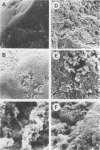Abstract
The colonization of granular activated carbon columns by bacteria can have both beneficial and potentially detrimental consequences. Bacterial growth on the carbon surface can remove adsorbed organics and thus partially regenerate the carbon bed. However, growth can also increase the levels of bacteria in the column effluents, which can adversely affect downstream uses of the treated water. This study of a sand column and several activated carbon columns demonstrated that considerable marine bacterial growth occurred in both sand and carbon columns and that this growth increased the number of bacteria in column effluents. Activated carbon supported approximately 50% more bacteria than did sand. Bacterial growth on activated carbon was reduced by increasing the flow rate through a carbon column and increasing the carbon particle size. Scanning electron micrographs showed that bacteria preferred to attach in the protected crevices on both the sand and carbon surface. The results of this study indicated that the colonization of activated carbon by marine bacteria was enhanced because of carbon's high surface area, its rough surface texture, and its ability to absorb organic materials.
Full text
PDF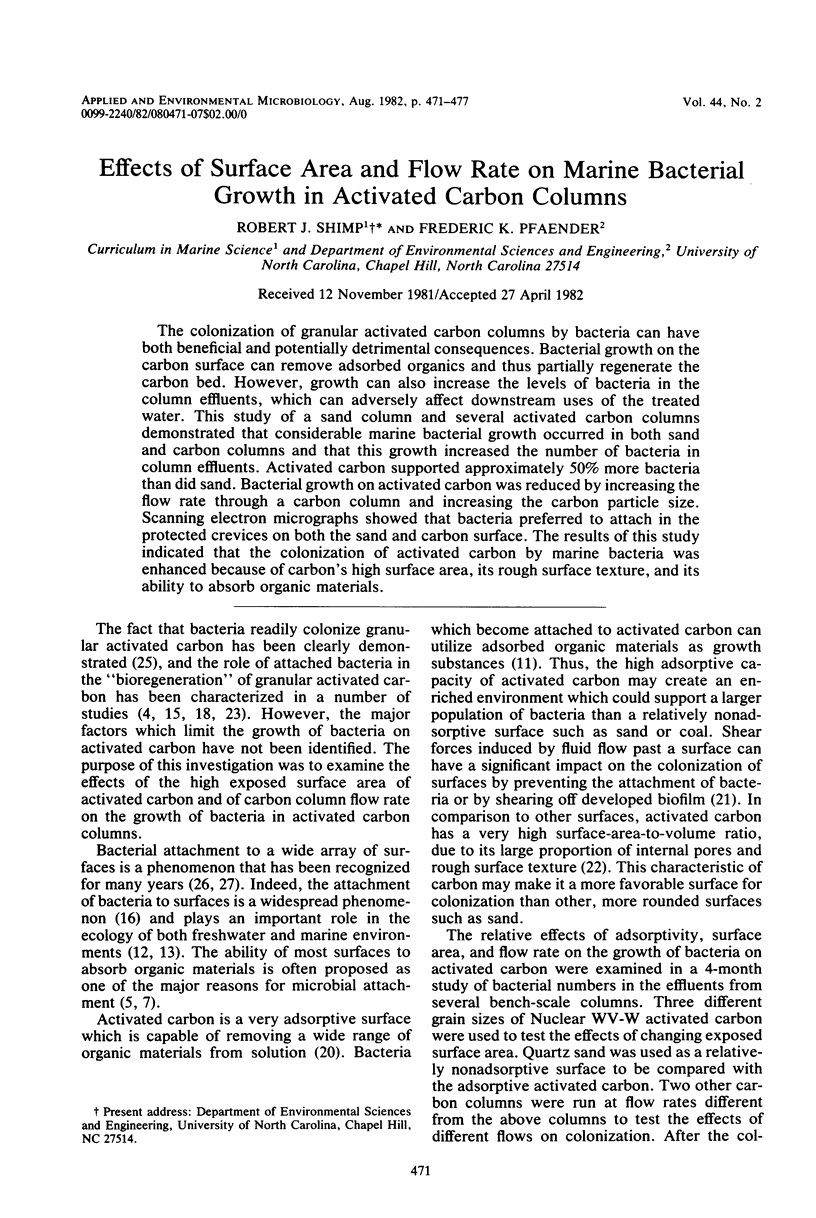
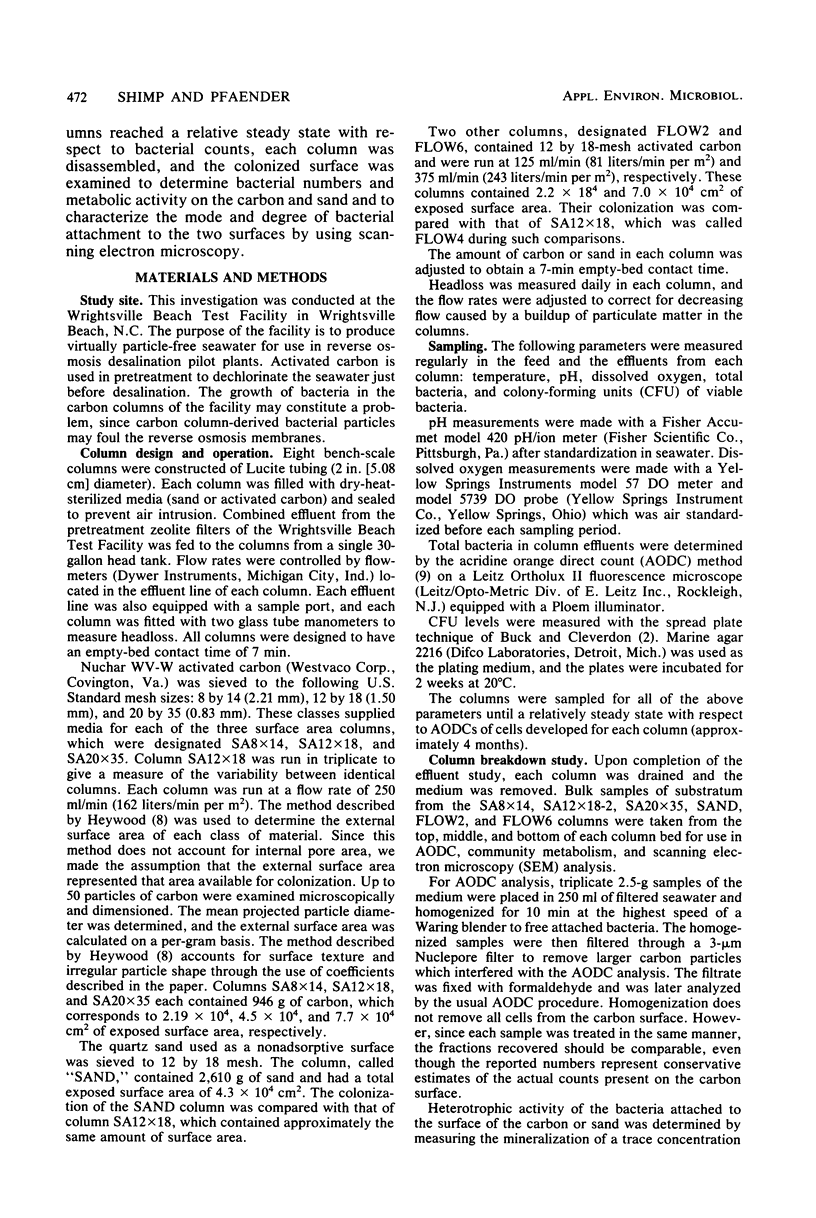

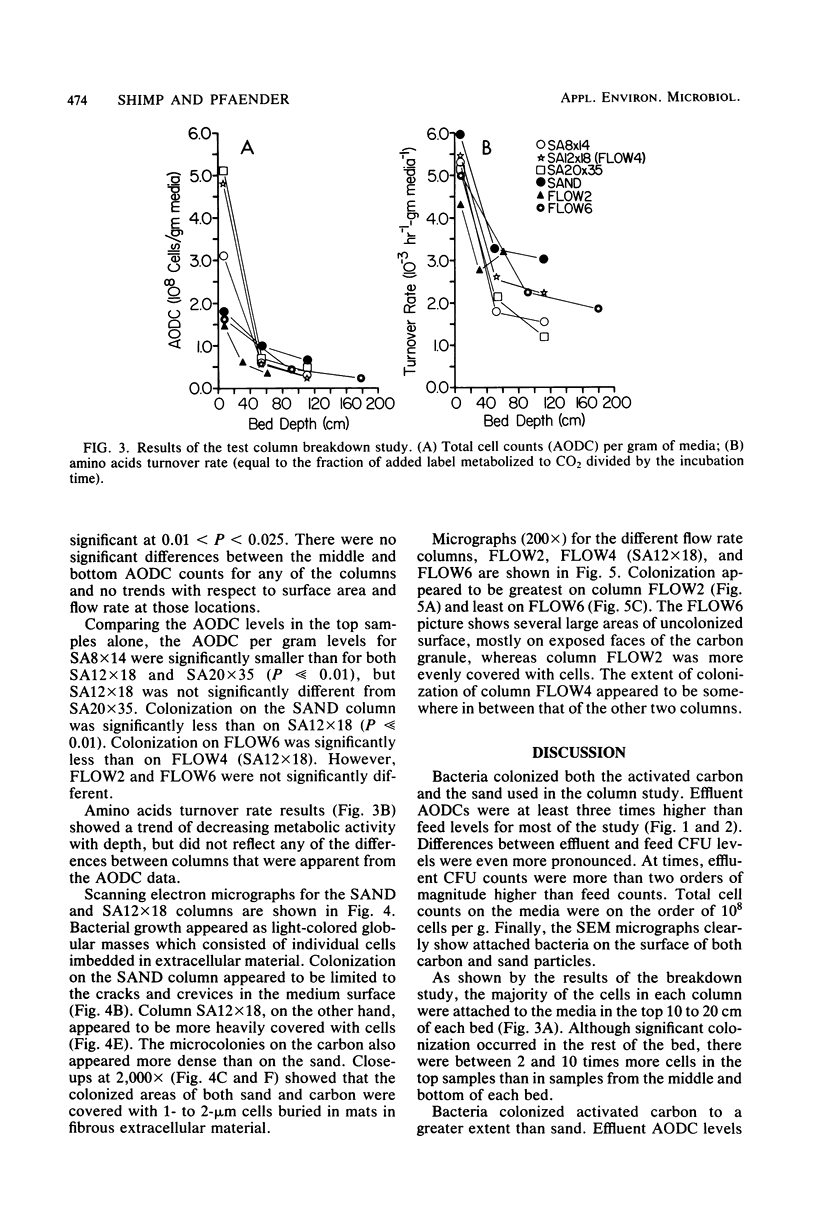
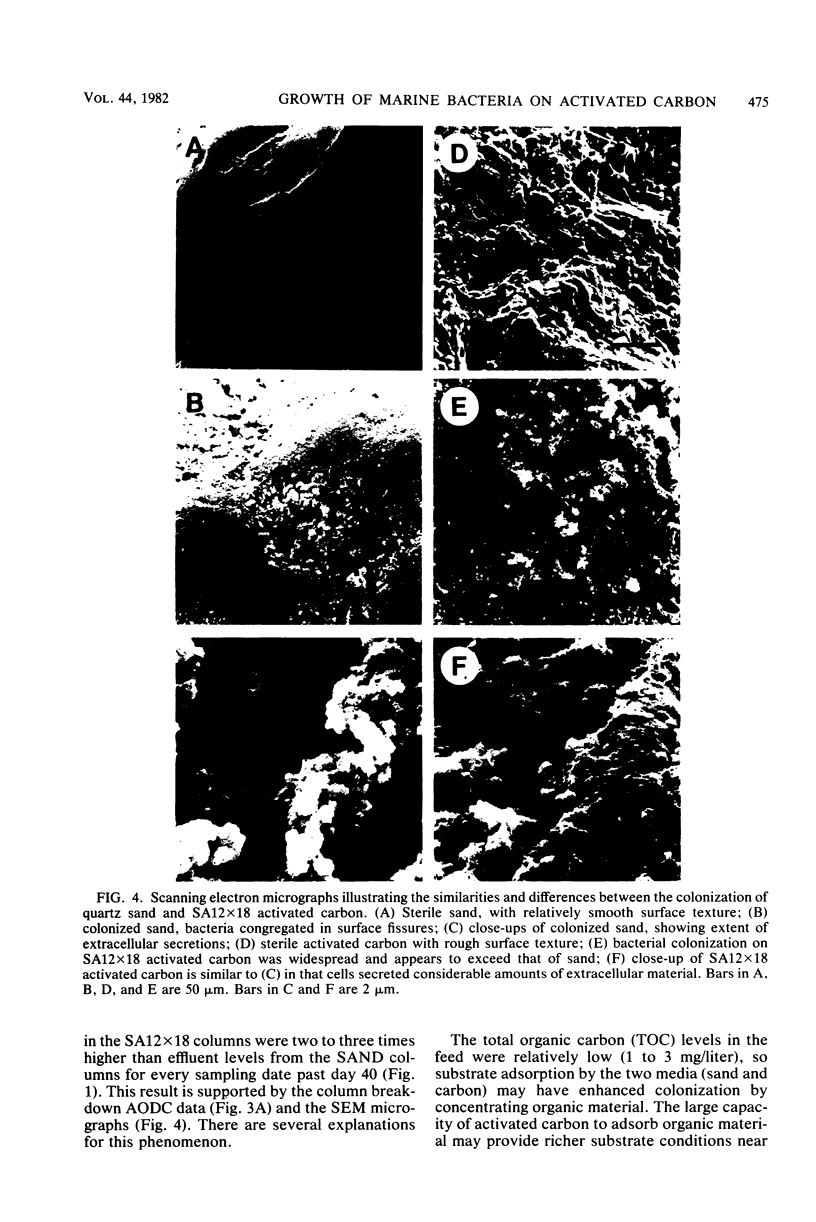

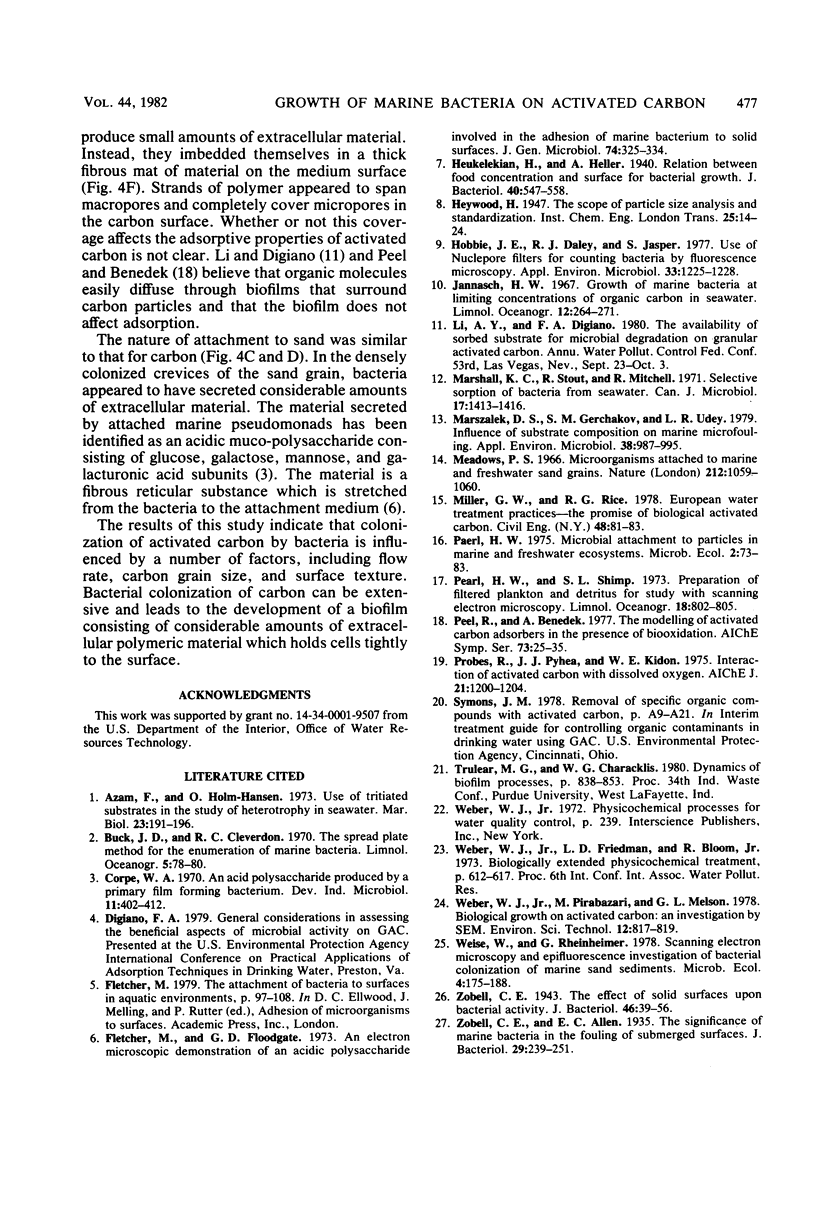
Images in this article
Selected References
These references are in PubMed. This may not be the complete list of references from this article.
- Heukelekian H., Heller A. Relation between Food Concentration and Surface for Bacterial Growth. J Bacteriol. 1940 Oct;40(4):547–558. doi: 10.1128/jb.40.4.547-558.1940. [DOI] [PMC free article] [PubMed] [Google Scholar]
- Hobbie J. E., Daley R. J., Jasper S. Use of nuclepore filters for counting bacteria by fluorescence microscopy. Appl Environ Microbiol. 1977 May;33(5):1225–1228. doi: 10.1128/aem.33.5.1225-1228.1977. [DOI] [PMC free article] [PubMed] [Google Scholar]
- Marshall K. C., Stout R., Mitchell R. Selective sorption of bacteria from seawater. Can J Microbiol. 1971 Nov;17(11):1413–1416. doi: 10.1139/m71-225. [DOI] [PubMed] [Google Scholar]
- Marszalek D. S., Gerchakov S. M., Udey L. R. Influence of substrate composition on marine microfouling. Appl Environ Microbiol. 1979 Nov;38(5):987–995. doi: 10.1128/aem.38.5.987-995.1979. [DOI] [PMC free article] [PubMed] [Google Scholar]
- Zobell C. E., Allen E. C. The Significance of Marine Bacteria in the Fouling of Submerged Surfaces. J Bacteriol. 1935 Mar;29(3):239–251. doi: 10.1128/jb.29.3.239-251.1935. [DOI] [PMC free article] [PubMed] [Google Scholar]
- Zobell C. E. The Effect of Solid Surfaces upon Bacterial Activity. J Bacteriol. 1943 Jul;46(1):39–56. doi: 10.1128/jb.46.1.39-56.1943. [DOI] [PMC free article] [PubMed] [Google Scholar]



